
Aquarists can say they’ve never made a mistake in their fishkeeping experiences, but in reality, of course all of us have made mistakes during our time in this hobby. If only we knew then what we know now. As with so many things in life, it‘s whether we learn from our mistakes that will determine how successful we will be. Granted, the mistakes we all make can be frustrating, as is evident in the statistics and studies showing that a large percentage of hobbyists quit soon after beginning — some even within a month.
If you are a newcomer to this wonderful hobby, try not to be discouraged — and most of all, do not give up. I promise that no matter how frustrating or difficult fishkeeping may seem at the moment, if you learn from your mistakes, you will truly find this hobby rewarding.
On the other hand, there‘s another philosophy we can apply here: Learn from the mistakes of others. With this in mind, I’ve created a list of 10 of the more common mistakes made in the hobby (in no particular order). Learn from this list and avoid these mistakes before you even come close to making them. We’ll cover the first five this month and the last five in the next issue.
Whether you are new to fishkeeping or have been at it for many years, overfeeding the fish is typically among the hardest mistakes to avoid. Many would say that feeding their fish is the most enjoyable part of this hobby because it is our way of interacting with them.
Our fish would have us believe they are starving to death the way they endlessly beg for more food. Overfeeding our fish, however, is a serious concern and a mistake we definitely want to avoid. It can be directly harmful both to the health of the fish and the quality of the water they live in, which will also negatively affect their health. The effect that overfeeding has on the quality of the water in your aquarium may not be obvious. All that uneaten food or additional waste produced from overfeeding will be broken down into ammonia and nitrite, both of which are extremely toxic to fish. As uneaten food decays, it can also cause a variety of other problems, including cloudy water, algae blooms — even low pH and oxygen levels in your tank.
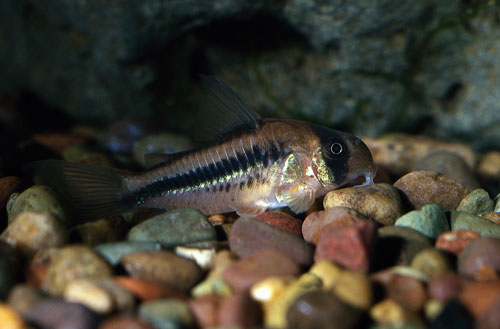
When I used to work in a pet store, many beginners would come into the store complaining that their tank was full of small worms. Right away, without even asking any questions, I knew this person was more than likely overfeeding the fish. The little flatworms they saw are known as planaria, and though these worms are generally harmless (and ironically, your fish will even like eating them), they are an indicator that water quality is not optimal and (usually) that the fish are being overfed.
Another all-too-common mistake is overstocking our aquariums. I am speaking from experience when I say that it can be difficult to resist the urge to add more fish. We’ve all been there, browsing through fish tanks at our local dealer when we spot something new we just have to have. Impulse buying is a weakness for many of us.
It can also be a little confusing for beginners to appreciate the difference between the local dealer‘s tanks and their own aquariums. The store has 50 fish in a 10-gallon tank, and they all seem healthy, so why wouldn’t that work at home? The fish in store tanks are typically there a relatively short time, the tanks receive large water changes and often are filtered with a centralized systems (which use ultraviolet sterilizers and are designed to handle large bioloads).
I’m not going to provide a general rule for stocking the aquarium but will instead encourage you to research the specific needs of the fish you are interested in. Read as much as you can. Find a trustworthy pet store, and talk to experienced fishkeepers.
Overcrowding brings many potential dangers and in most cases is a disaster waiting to happen. The exception worth noting is with certain African cichlids that are intentionally overcrowded to reduce aggression and fighting over territory. It takes an experienced aquarist to accomplish this successfully.
Some of the problems with overcrowding are the same ones that result from overfeeding, such as elevated ammonia and nitrite levels. The increased bioload from having too many fish can overwhelm the filtration system. Increasing the size of the filter cannot overcome excessive stocking densities. Overcrowding creates unnecessary stress on your fish, lowering the effectiveness of their immune system and increasing their susceptibility to diseases.
In addition, with the exception of certain African cichlids, overcrowding will actually increase aggression among some fish, which may result in injury or even death. And the stress from these conditions often also leads to disease issues in the tank.
Mixing incompatible fish is a big mistake, with potentially deadly results. Beginners are often unaware that many fish have very different needs and do not belong in the same tank. Some pet store personnel will explain this, but not all. For example, when a small juvenile becomes larger, it will eat fish that remain smaller, such as neon tetras. And this is by no means our only concern when selecting potential tankmates. We have to be aware of temperament, environmental needs and dietary requirements.
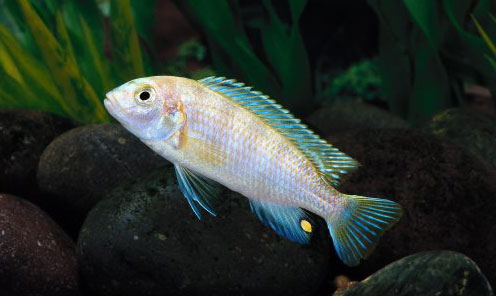
A common mistake is not learning how large fish will grow, which may result in predation, as noted above, but can also result in a bioload problem as fish become too large for the tank.
Even with similarly sized fish, we need to learn about their temperaments. Some small fish, such as tiger barbs, are fin-nippers and should not be mixed with fish that have long fins. By learning about our fish, we can discover that certain species need to be kept in schools with their own kind. Other fish require large territories, and having a tank that’s an appropriate size goes a long way in maintaining a peaceful community. Another concern with certain fish is having too many males in the same tank, which will lead to fighting. Many of these problems can be minimized or eliminated by doing research ahead of time.
Water chemistry also plays a role in our selection of fish. For example, some fish have significantly different pH requirements. Temperature is another concern, as many fish will prefer different ranges.
Dietary needs are an important factor in determining which fish are compatible. This is often an issue of differing vegetable and protein intake requirements, which may not be easily resolved. Some fish are shy or even slower, making it difficult for them to get any food in a tank with aggressive eaters.
I caution you not to forget catfish or bottom-feeders that may be in your tank. For example, I had many customers who could just not keep cory cats alive for more than a few weeks. Their water tested fine, and all their other fish were thriving — plus the fact that most cory cats are fairly hardy to begin with. Their Corydoras were actually starving to death, as no food made it to the bottom of the tank where they eat. Once these customers started providing sinking pellets and tablets, their cory cats thrived.
I can‘t stress enough the importance of having a regular routine of water changes. It can be the difference between being successful and not being in the hobby for long. Regular water changes are the key to maintaining good quality water and thus the well-being of our aquarium inhabitants.
We must recognize that our aquariums are closed systems in which a variety of pollutants will build up fairly quickly — especially if our tanks are overcrowded and the fish overfed. The solution to pollution is filtration (see mistake number five) and dilution. When we do a water change, we replace dirty water with clean water, helping to reduce the build-up of undesirable dissolved substances, some of which filtration cannot remove completely. Other benefits of regular water changes include improved water clarity and reduction of any odors. We also replenish important trace elements and essential minerals.
You might assume that having a filter eliminates the need for water changes. An effective filter will help maintain better water quality. However, filtration only slows down decreasing water quality and will not remove all pollutants.
Human nature being what it is, we often keep putting off water changes until problems arise. Missing an occasional water change is usually not a problem, but maintaining a regular schedule really is vital to the well-being of our fish. By the way, replacing water that has evaporated does not constitute making a water change. When water evaporates from the aquarium, all the "bad stuff” (nitrates and ammonia) stays behind. While filtration helps to remove these to a degree, water changes is the best way to maintain a healthy system. If the hobbyist falls into the trap of just replacing evaporated water, this will eventually lead to water with dangerous levels of toxins. So do regular water changes, and go to your local fish store to see what kinds of products they have to make water changes as easy and effective as possible — and then use them.
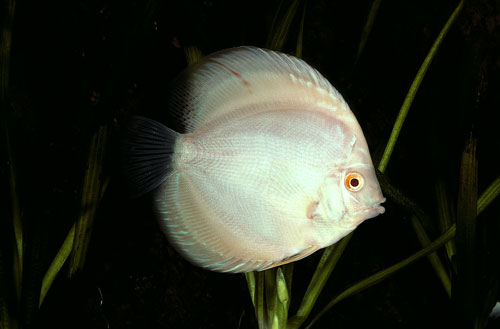
How often and how much water you should change depends on several factors, including stocking density, the presence of live plants and what kinds of food are offered. I prefer to replace about 10 percent of the tank volume every week, but others will do closer to 25 percent every other week. With larger changes, it’s better if the replacement water is of similar temperature.
Because our tanks are closed systems, regularly changing the water is the most important thing a hobbyist can do to keep a healthy tank.
Filter maintenance is a necessity. Don‘t be fooled because the water looks crystal clear. Clear water does not mean clean water. Avoiding filter maintenance is just asking for trouble — maybe not right away but sooner than you might wish.
Filtration can be broken down into three categories: mechanical, biological and chemical. Each is important to the quality of the aquarium water. Filters will become clogged and dirty over time, preventing them from functioning properly. The more fish and food, the faster this occurs. Regularly maintaining a filter includes occasionally cleaning tubes, strainers and impellers, which will have the added benefit of increasing the life span of the filter.
The method of cleaning the filter is as important as the frequency. We never want to replace all the filter media at one time, as this would cause the loss of all the beneficial bacteria responsible for biological filtration. Many filters have separate sponges or other media for biological filtration, allowing us to replace filter cartridges without losing most of the bacteria. If your filter has two cartridges, replace only one at a time. By leaving behind used media, we allow the new media to be quickly seeded with the necessary bacteria.
When cleaning any filter media that will be reused, never wash with tap water, as chemicals such as chlorine could potentially kill the bacteria. Instead, rinse in a separate container/bucket with water from the aquarium. Water changes are an excellent time to do this. Empty the dirty water in the yard (the plants will use the nutrients) or down the drain.
One of the hardest tasks in my days spent in the pet retail business was trying to help new customers understand that it was not in their best interest to buy a new aquarium and fish on the same day. You can probably imagine how difficult this was, especially when anxious children were involved. In fact, more than a few customers would have us catch the fish they wanted, bag them up, and then catch us completely off guard by asking what tank would be best for them.
Buying an aquarium and fish on the same day is simply not the best course of action — you are just asking for trouble and are most likely setting yourself up for failure. This is perhaps one of the biggest reasons that many new hobbyists give up; they have unknowingly made it almost impossible for themselves to succeed.
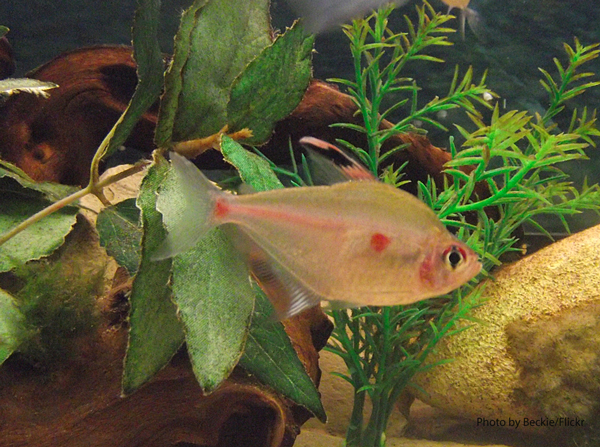
Part of the blame can be placed on a few unscrupulous pet stores that just want to make the quick sale. However, ultimately it is up to each individual hobbyist to educate his or herself so that this mistake is not made, and also so the hobbyist understands the reasons for not buying an aquarium and fish on the same day.
A person who wants to buy a tank and fish at the same time is normally new to the hobby. Most likely, this person is not familiar with the necessary equipment for aquariums, nor how to set them up or how they operate. It is best to allow time to become familiar with how the filter, heater, air pumps, lighting system and other equipment works — this way, you can make sure everything is functioning properly, the water parameters are stable and that there are no leaks.
The main reason to not buy an aquarium and fish on the same day has to do with tank cycling. Maintaining and starting a healthy aquarium begins with a proper understanding of the nitrogen cycle. This is a natural process that provides biological filtration, with different types of bacteria converting harmful waste into less toxic compounds. The cycle begins with an ammonia spike from fish waste and food. It is then converted into nitrite, which consumes the ammonia (both ammonia and nitrite are toxic to your fish). Once the nitrite is broken down, nitrate is left. Depending on the system, nitrate can be acceptable in low levels. By performing regular maintenance and water changes as mentioned in part one, nitrate levels will stay under control.
How long it will take your tank to cycle will depend on several factors. Cycling a tank starts with adding a source of ammonia. Traditionally, this is accomplished by starting your tank off with a few very hardy fish and then gradually adding more fish. However, if you really think about it, you are exposing these fish to pollutants and toxins and hoping they survive. More people are starting to use fishless cycling to get their aquariums off to a good start. I would encourage you to look further into fishless cycling as an alternative to the more traditional methods.
At home and work, since I have a lot of aquariums available to me, I run a filter on an established aquarium for a week or two in order to cycle it. It’s almost like an instant cycle. If you don’t have an extra filter, ask a friend who wouldn’t mind to let you run a filter on his or her healthy aquarium. You can also take some of the used filter media or gravel from an established aquarium to get your tank started in the right direction. If you don’t have access to another aquarium, there are also some commercially available products that can help speed up the cycle by introducing beneficial bacteria to the aquarium.
However we choose to cycle our aquariums, hobbyists need to be able to track the ammonia, nitrite and nitrate levels in their aquarium to determine how far along they are in the cycle process, so they will know when to add fish. This brings us to the next common mistake many aquarists make.
I remember one customer in particular who was having a hard time keeping his fish alive; however, he refused to believe that testing his water was important and instead accused us of selling sick and dying fish. When I tried to explain the nitrogen cycle and the importance of cycling his aquarium, he told me that he just wanted "to keep a couple of fish in a tank” and didn’t want "to become a chemist or scientist.”
While this kind of customer is difficult to deal with, his statement reveals a common misconception (or fear) of many new aquarists. Understanding the nitrogen cycle and basic water parameters, and testing for them does not require a large amount of chemistry knowledge. A very basic understanding of what is happening in the water of our fish tanks will go a long way toward us succeeding and therefore enjoying this hobby.
Routine testing is the only accurate way to be certain that our water parameters are within an acceptable range — and this is especially important for beginners. Every hobbyist should own at least a basic aquarium test kit that tests for pH, ammonia, nitrite and nitrate. By testing for the levels of these, we can determine how our tank is cycling. We will know if it is safe to add more fish. Testing our water regularly will help us to diagnose potential problems, such as a high ammonia level, before it is too late.
Take the time to learn not only what you are testing for but also what the results tell you. Fluctuating water conditions are not healthy for your fish, and testing regularly will help you to maintain the proper water conditions. One last tip that you might find helpful is to keep a record of your test results, doing so may help you to identify potential problems or even mistakes we might be making.
Not quarantining new fish before introducing them to your main tank is an all-too-common mistake shared by beginners and advanced hobbyists alike. For beginners who have just invested a considerable amount of money purchasing their first aquarium and who may already be on information overload, the thought of having to purchase an additional tank for use as a quarantine tank might be overwhelming and perhaps not even make any sense. I recall that some customers interpreted the recommendation to use a quarantine tank to mean that we were selling unhealthy fish.
Even among seasoned aquarists, you would probably be surprised how many ignore the important task of quarantining. Whether you are a beginner or experienced hobbyist, skipping this important practice is taking a gamble with potentially serious consequences. I learned this the hard way when I was a lot younger. I had a 150-gallon tank that housed about 25 very large beautiful angelfish, all of which I bred. I decided that I wanted to add a little color to the tank, and I purchased about 30 lemon tetras from my local pet store. They looked very healthy, so I went ahead and introduced them to my big display tank without quarantining them. Everything went great for about two weeks, then one morning I awoke to a complete nightmare. Most of my beautiful angels had clamped fins, and they stopped eating. To make a long story short, I ended up losing about 20 of those angels and all 30 of the lemon tetras due to infection. All of this could have been avoided if I simply used a quarantine tank.
Every time we introduce new life into our aquariums, there is the potential risk of introducing different diseases and parasites. Even if fish look healthy in the store or perhaps are quarantined briefly by the store itself, we cannot automatically assume they are disease-free. Some diseases or parasites may not manifest themselves for a couple of weeks or longer.
By isolating newly purchased fish in a quarantine tank for an extended period of time, we can make sure our fish are disease-free. If it turns out they are sick, it will be much easier to treat them in the quarantine tank without any risk to our main tank(s). This way, the main display tank does not have to be treated, eliminating other potential problems, such as killing beneficial bacteria (which many medicines or treatments will do). Medicating a tank can also be expensive if the tank is large, another bonus of treating the smaller quarantine tank. If you maintain a planted or reef tank, you may not even be able to use certain medicines without potentially deadly consequences for plants and invertebrates.
Another added benefit of the quarantine tank is that you allow your new fish time to settle in and regain their complete health. Besides the stressful move from the store to your tank, your fish may have been shipped halfway across the country to get to the store where you purchased them. The quarantine tank allows them to recuperate from all this stress and be in excellent condition for when you introduce them to your main tank.
Whenever we try something new for the first time, it is usually recommended that we start small and then work our way up to bigger and better. This is usually sound advice, and we can clearly see the logic in it. The question for the new aquarist is whether they can apply the same reasoning to their new hobby.
It would seem to make sense to start with a smaller aquarium, perhaps even one of popular desktop or nano tanks. You may reason that it will be easier to hone your fishkeeping skills on a smaller tank, plus it is more cost-effective to start small. You might decide that once you know what you are doing and have had some success, you will go bigger. At first glance, this might seem very logical, and after all, it works in other aspects of your life. However, let me explain why this might be faulty thinking and share with you some of the common pitfalls with keeping a smaller aquarium.
First of all, let me state that maintaining smaller aquariums is not impossible, nor are you doomed to failure if you start with a small tank. What we need to realize is that smaller aquariums are a lot less forgiving than their larger counterparts. Due to the smaller volume of water, water parameters, such as pH and temperature, can change quickly. Skipping regular maintenance, overfeeding or any of the other mistakes mentioned in this two-part article will only be magnified in a smaller tank. Maintaining a stable environment in smaller aquariums takes discipline and experience — any mistakes made on our part can prove disastrous. With a larger, more forgiving aquarium, such mistakes might not be as detrimental, or at least we allow ourselves time to resolve any potential problems.
For the beginner who may already be inclined to overstock an aquarium, a smaller tank is just asking for trouble. Let’s face it: We always want more fish, plus a smaller aquarium limits the types of fish you can keep. Of course, budget may determine how large of an aquarium you may purchase, but I advise against beginning with too small of a tank.
No, I didn’t just throw this one in to see if you were paying attention. You might be wondering what in the world it is that garage or yard sales have to do with keeping fish. Well, at almost every garage sale I have ever been to, I have seen a fish tank and related equipment for sale. In fact I have gotten some great deals on expensive items, including filters, at a garage sale.
Have you ever wondered why there are so many fish tanks at garage sales? Sometimes, I ask the sellers why they were selling their fish tank; a typical response is that that they couldn’t keep any fish alive and finally gave up on the hobby. So, a fish tank at a garage sale can represent one of the biggest mistakes a beginner can make: giving up on this wonderful hobby. Maintaining a successful aquarium is not that difficult, but you may find it hard to succeed if you don’t take the time to learn and do research.
So there you have it. These are the last five of the top 10 mistakes that all of us should try to avoid, whether we are beginners or advanced aquarists. Taking the time to learn as much as possible about this hobby (such as reading this magazine regularly) will help you be successful and find all this fishy business rewarding. Don’t get too down on yourself if you make any mistakes along the way. We all make them, but learn from them, and don’t forget to enjoy your aquarium as you learn!
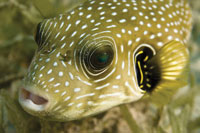 Pufferfish Teeth Care
Because their teeth are constantly growing, pufferfish
Pufferfish Teeth Care
Because their teeth are constantly growing, pufferfish
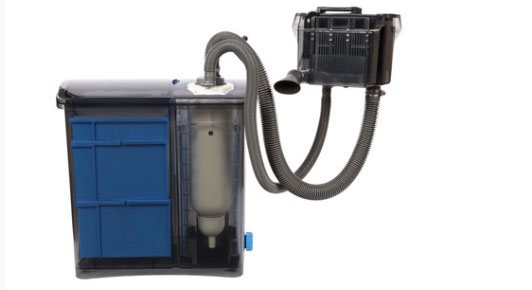 Aquarium Filtration Done Right
Today, keeping unique aquatic species is now commonplace tha
Aquarium Filtration Done Right
Today, keeping unique aquatic species is now commonplace tha
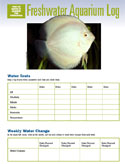 Aquarium maintenance logs for freshwater, saltwater and reefkeeping aquarists
Thank you for signing up for the FishChannel newsletter, the
Aquarium maintenance logs for freshwater, saltwater and reefkeeping aquarists
Thank you for signing up for the FishChannel newsletter, the
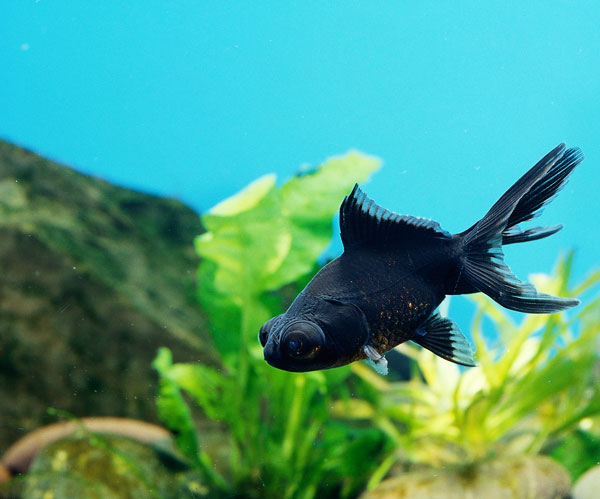 Fish and Fungus
Black Moor Q. I have two large black moor goldfish, one larg
Fish and Fungus
Black Moor Q. I have two large black moor goldfish, one larg
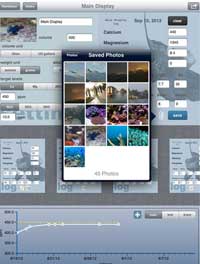 Reefdoser Pro for iPad Ships
Reefdoser Pro for iPad Ships
Copyright © 2005-2016 Pet Information All Rights Reserved
Contact us: www162date@outlook.com